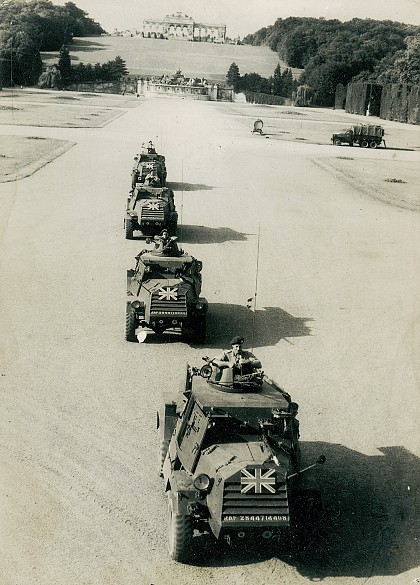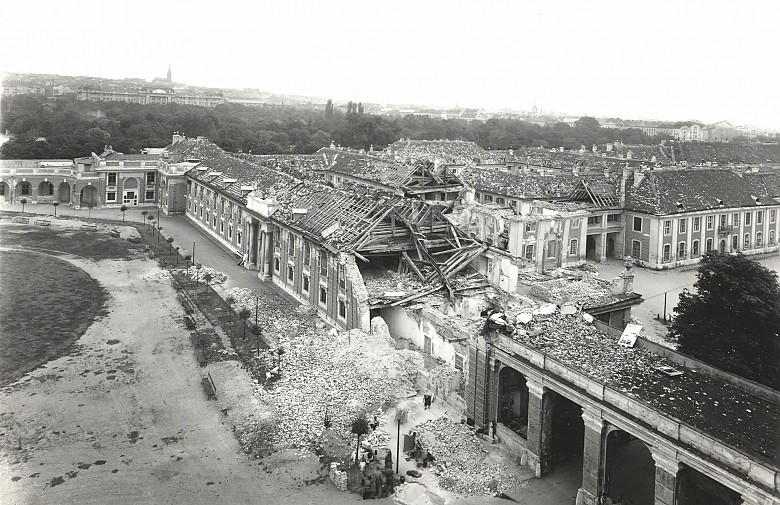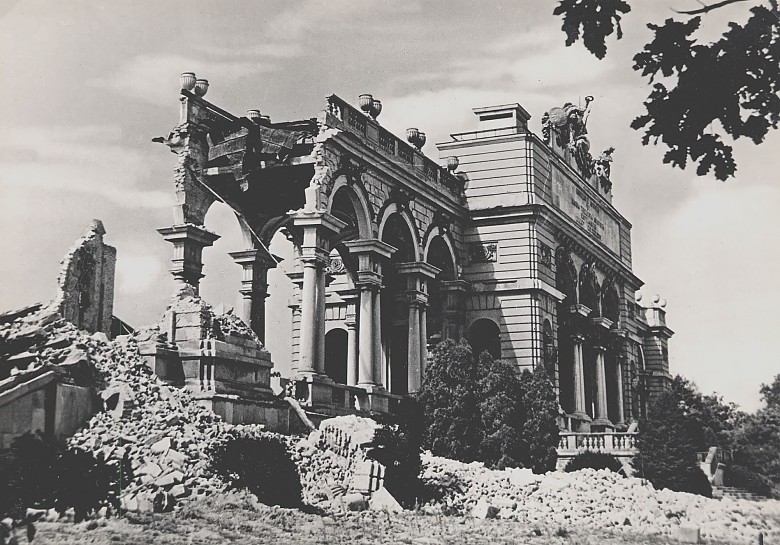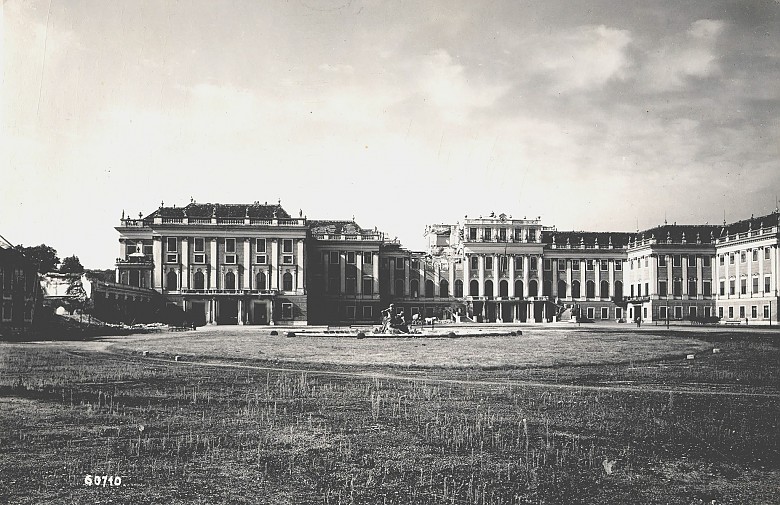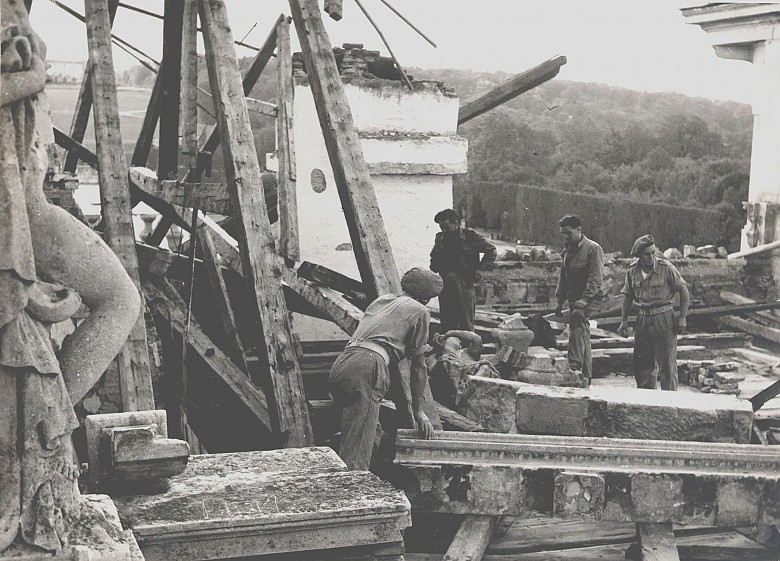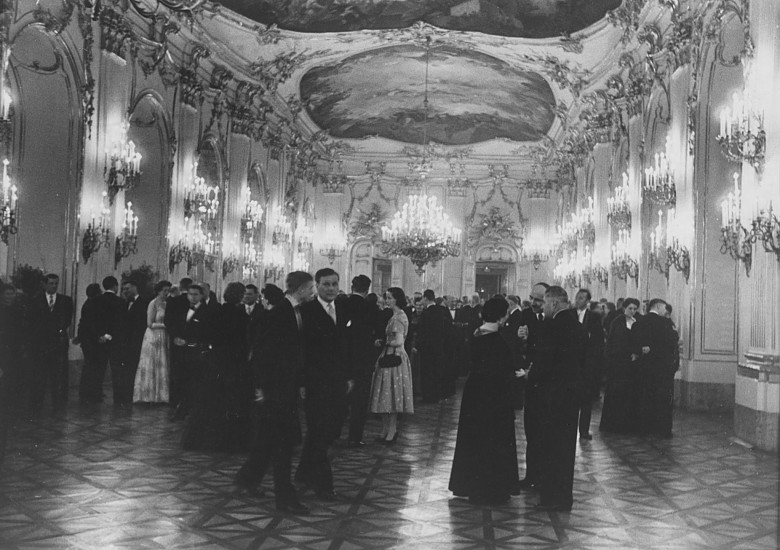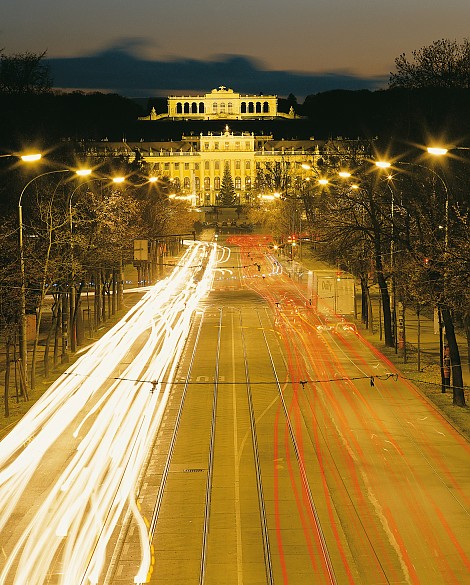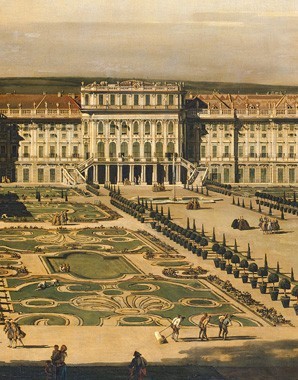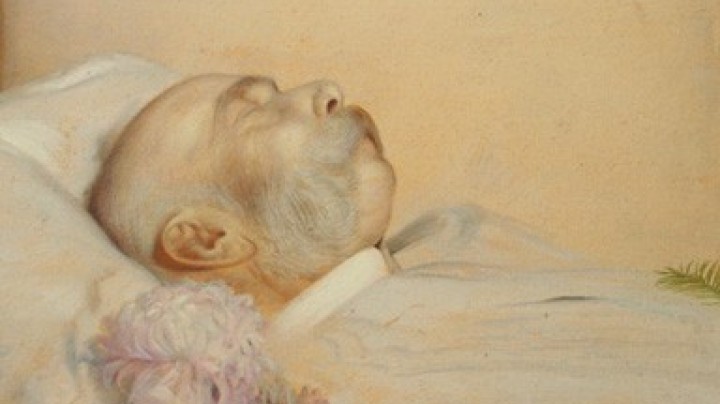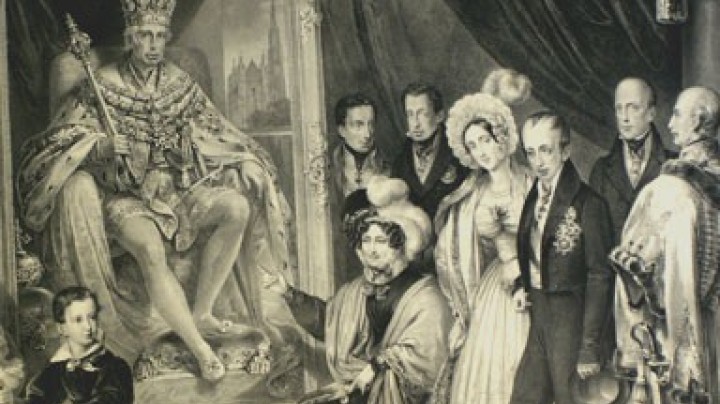Schönbrunn after the Second World War – nostalgia and imperial cult
Around two million people annually visit Vienna’s most popular attraction: the former Imperial Apartments at Schönbrunn Palace. After the war damage had been repaired. Schönbrunn became a locus of nostalgia and an almost cultic reverence of the imperial past.
During the Second World War parts of the palace were used by units belonging to the National Socialist security and military police; nevertheless, the state rooms could be viewed until the autumn of 1943. Eventually however, the threat of aerial bombardment led to a number of particularly valuable items being taken to safety and stored in a salt mine. On 19 February 1945 the main building took a direct hit. A hail of broken window panes and roof tiles rained down, and a large hole yawned in the roof of the central wing. The décor of the Great Gallery was partially damaged by the impact, but luckily no fires broke out. The main building came off relatively lightly, as after the raids were over, a total of 269 impacts were recorded which had caused severe damage to the ancillary buildings and the park.
During the Allied occupation of Austria from 1945 to 1955 Schönbrunn was requisitioned by the British forces as an administrative headquarters and also used for official occasions. There are news reports of large-scale military parades, celebrations and firework displays that were attended by the Viennese in their thousands. After the withdrawal of the occupying powers the palace was used as an impressive setting for state receptions by the new Austrian Republic. The celebrations held to mark the State Treaty in 1955 – the actual signing of which took place at the Belvedere – were just the start of the continuing use made of Schönbrunn by the Republic of Austria to project its public image in this imperial setting.
Around the same time, the ‘good old days of the Empire’ began to be idealized in the establishment account of Austrian history; the previous inclination to forget these times – as in the period following the First World War – yielded to a renewed emphasis on Austria’s imperial past.
Nostalgia and the cult of the imperial past also fed the success story of Schönbrunn as the country’s top tourist attraction. Its most important role today is as a museum. The huge costs involved in the maintenance and preservation of the palace complex are today financed from the revenue from tourism. Balancing the demands posed by conserving the heritage of the palace as a historic monument against the needs of visitors is the prime task of the Schloss Schönbrunn Kultur- und Betriebs Ges.m.b.H., the limited-liability company that has managed Schönbrunn on behalf of the state since 1992.
